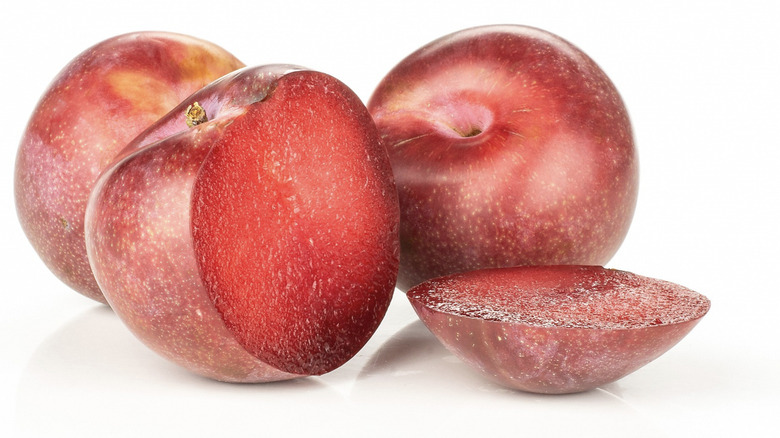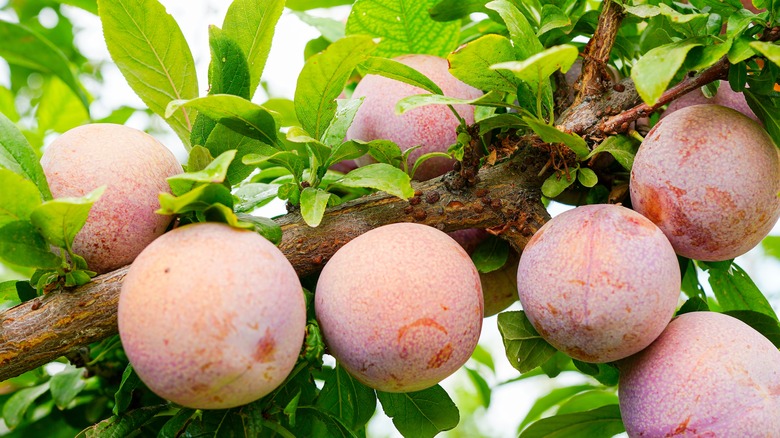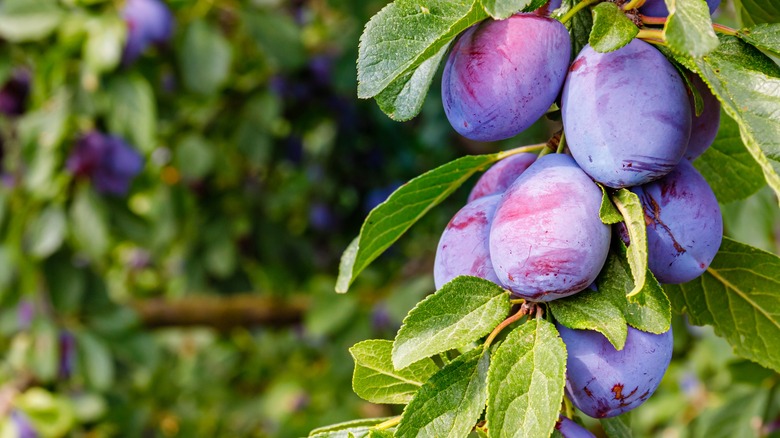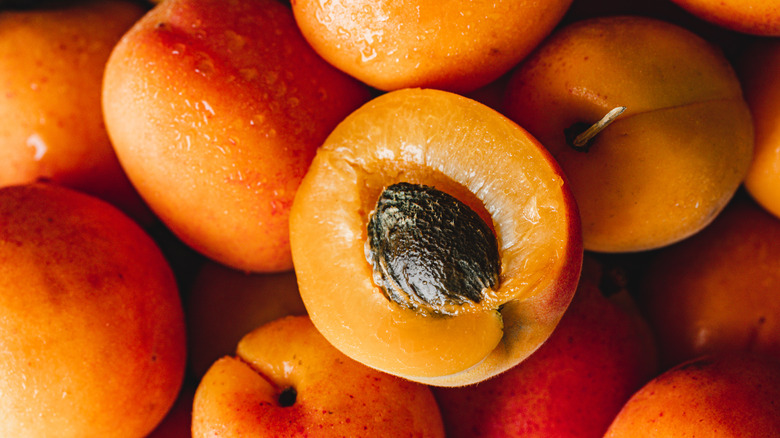How A Pluot Differs From A Regular Plum Or Apricot
A stroll down the produce aisle of any major grocery store is filled with a myriad of fruits of all different flavors and colors, originated from many diverse regions of the Earth. With so many different fruits to chose from, its no surprise that horticulturists have created hybrid versions of popular fruits, marrying the best qualities of each to create a totally new, delicious offshoot.
Among these hybrid fruits is a large selection of plum hybrids, with the pluot being perhaps the most popular. Even though its name sounds more like a planet than a fruit, pluots can be used as the main ingredient in many fruit flavored jams, cakes, and even beverages.
When it comes to hybrid fruits, it's sometimes easy to lose track of what differentiates something like a pluot and the original fruits from which they are derived. Although all these fruits are members of the stone fruit family, they have a few key differences that make each unique.
What is a pluot?
Technically speaking, a pluot is a cross between a plum and an apricot — although it contains more plum genes than apricot genes (per the Washington Post). A pluot can be described as being 3/4ths plum and 1/4th apricot, which means that most of the fruit's flavor and texture are borrowed from the plum (via Better Homes & Gardens).
Pluots first entered the hybrid fruit scene in the late 1980s, created by a California-based plant breeder through means of pollination. To make the breed, pollen was transferred from tree to tree using tweezers.
The Food Literacy Center describes the taste of a pluot as being similar to plums, while lacking the acidity that can sometimes make plums taste tart. This makes them ideal for use in jams, pies, and other pastries for an added touch of sweetness that can't be reproduced by ordinary plums.
Even though pluots are known for being distinct from their plum and apricot parents, a great deal of variety exists within the species itself; over 80 varieties of pluots are available for consumption.
How a pluot differs from a plum
Even though plums have lent a lot of their traits to pluots, plums remain distinct from their offspring in a few important ways. First of all, plums are usually smaller than pluots, perhaps due to pluots borrowing some of their additional size from their apricot parents. Plums also feature a lower sugar content than pluots, giving them a slightly tart flavor.
When it comes to cultivation, certain varieties of plum trees are capable of self-pollination, making them ideal for anyone who only has room for one fruit tree in their garden (via Green Upside). Pluots, on the other hand, do require a pollinator, so having multiple trees along with the presence of pollinators like bees is essential if you want to produce pluots at home.
Another striking difference between the two plants lies in their histories. While pluots have only been around since the 1980s, plums have a history stretching back to China in the year 470 BC. Since then, plums have traveled across all corners of the Earth with the fruit species now boasting over 2000 varieties, per Foodwise.
How Apricots fit into the Pluot Mix
At first glance, pluots seem to borrow the majority of their traits from plums, however apricots are responsible for contributing a few key characteristics that make pluots unique.
Perhaps most importantly, pluots take much of their taste from famously sweet apricots, resulting in a flavor that offers the perfect balance between sweet and tangy. Pluot flesh, the juicy part of the fruit that is responsible for the much of the flavor and aroma, is also said to be more similar in structure to an apricot than a plum. Because of this important trait, pluots can be used in recipes where other stone fruits might not be appropriate, due to their ability to hold their form when exposed to heat, per Fine Dining Lovers.
Visually, most varieties of pluots are light in color and feature a golden yellow or slightly orange hue, a trait that makes the fruits' apricot heritage unmistakable.



